|
Headstick Setup Configuration
The warp strand that is to the right of the middle is in the top layer of the shed. 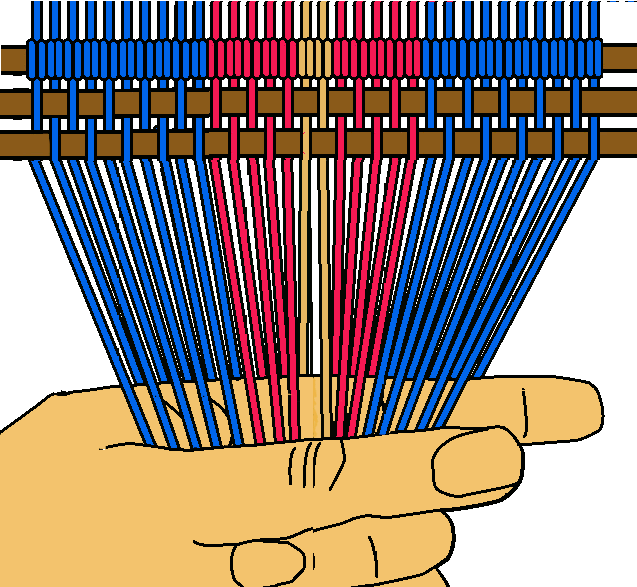
|
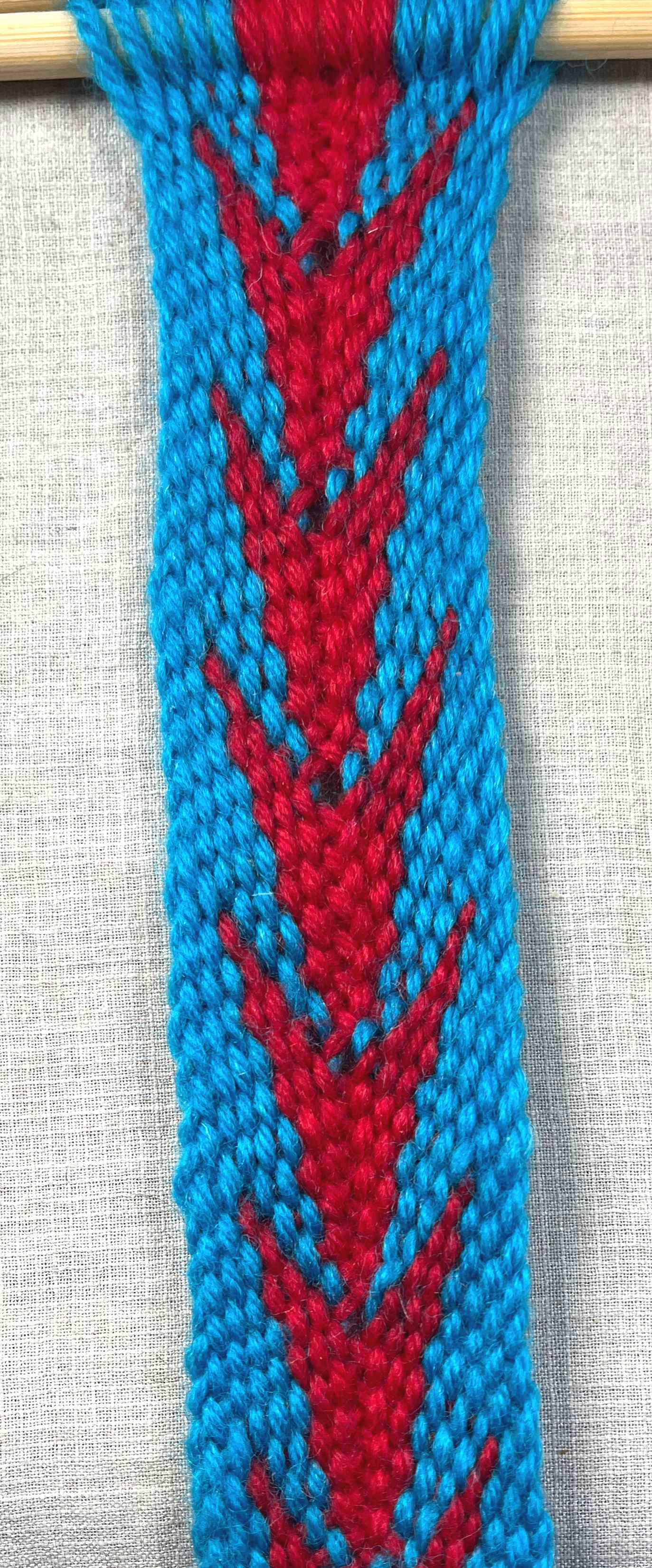
[OBSERVE] The barb on right hand sides of the arrowhead is longer than the barb on the left hand side. |
|
|
|
|
|
Warp strand right of the middle in the top shed layer. |
||
|
This part of the tutorial will present the steps for weaving the “point down” arrowhead pattern when the warp strand that is to the right of the middle of the work-piece is in the top layer of the shed.
[NOTE] The weaving for each row will start in the middle of the work-piece. [NOTE] The interlocks on the right side of the work-piece are made with warp strands from the top layer of the shed. [NOTE] The interlocks on the left side of the work-piece are made with warp strands from the bottom layer of the shed. |
||
| Start Tutorial |
|
Headstick Setup Configuration
The warp strand that is to the right of the middle is in the top layer of the shed. 
|

[OBSERVE] The barb on right hand sides of the arrowhead is longer than the barb on the left hand side. |
| Top of Page | Next |
| Find the middle of the work-piece. |
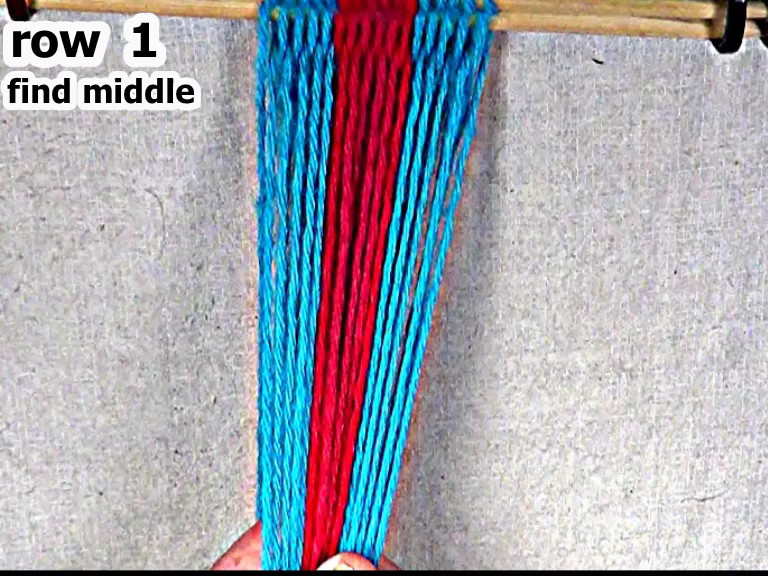
|
| Previous | Next |
Select the row 1 right side weft strand.
[NOTE] When starting a row of weaving, each row's right side weft strand is the first warp strand to the left of the middle. |
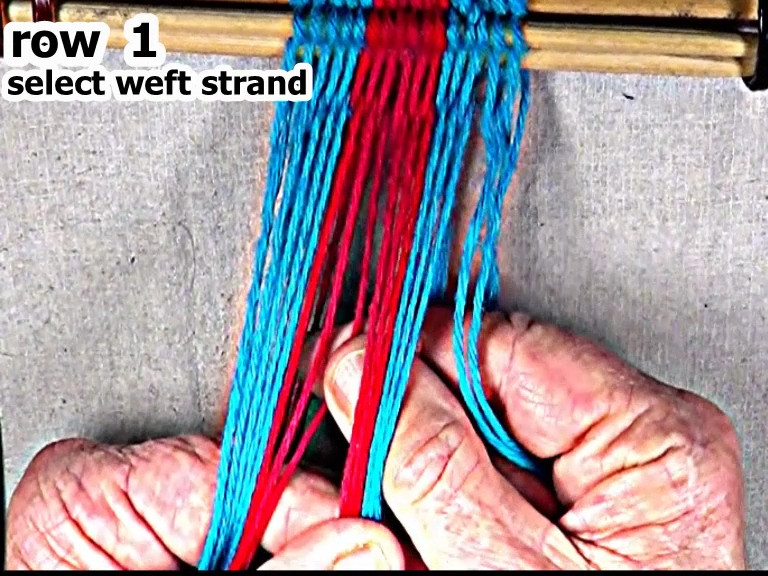
|
| Previous | Next |
Pass the weft strand through the open shed to right side background color warp strand that is one half the number of warp strands used for arrowhead design.
|
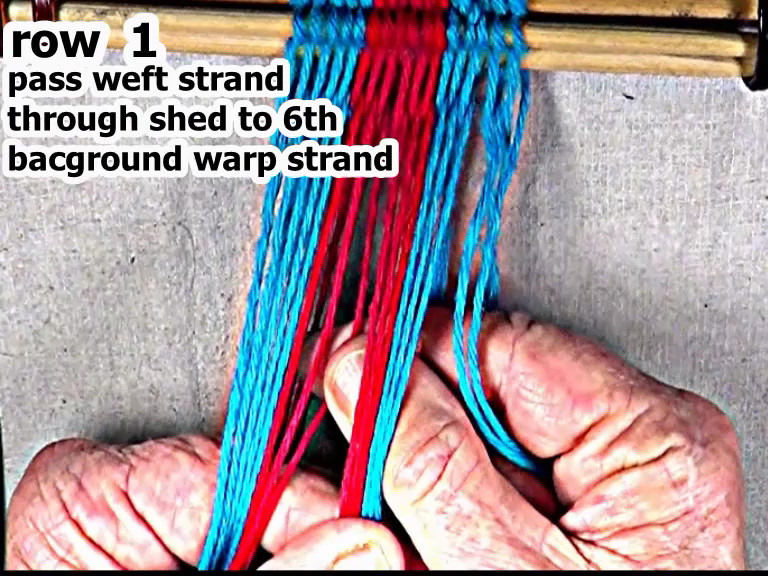
|
| Previous | Next |
Form the interlock in the row 1 right hand side weft strand.
Place the weft strand in the top layer of the shed.
[NOTE] The warp strand that was the 6th background warp strand becomes the next segment of the row 1 right side weft strand. |
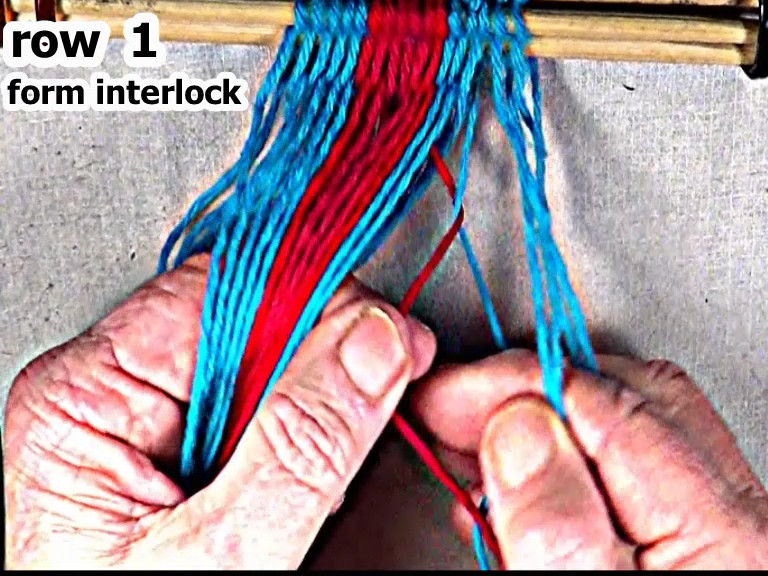
|
| Previous | Next |
| Pass the weft strand through the right hand side shed to the right hand edge of the work-piece. |
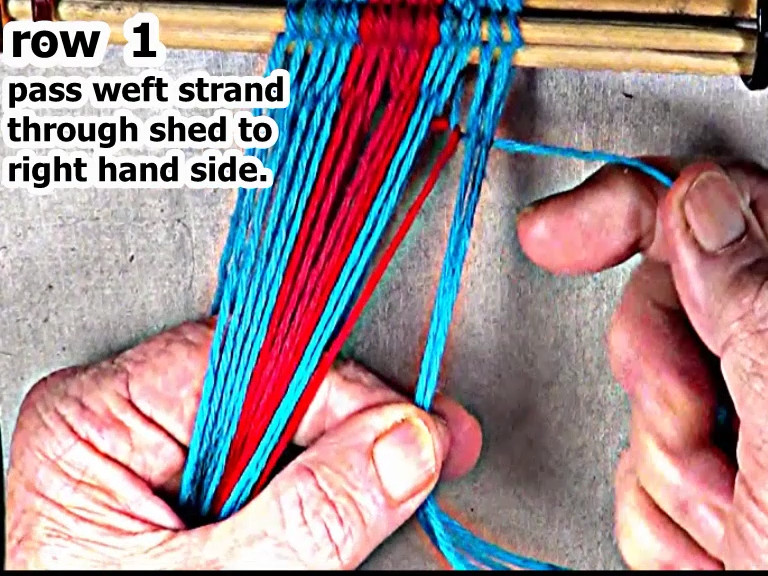
|
| Previous | Next |
Secure the weft strand.
|
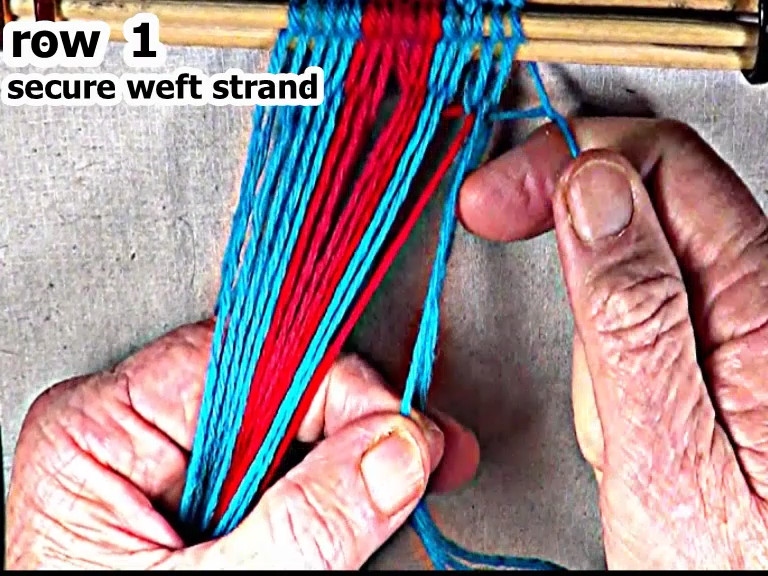
|
| Previous | Next |
Transfer the right hand side shed to the right hand index finger.
|
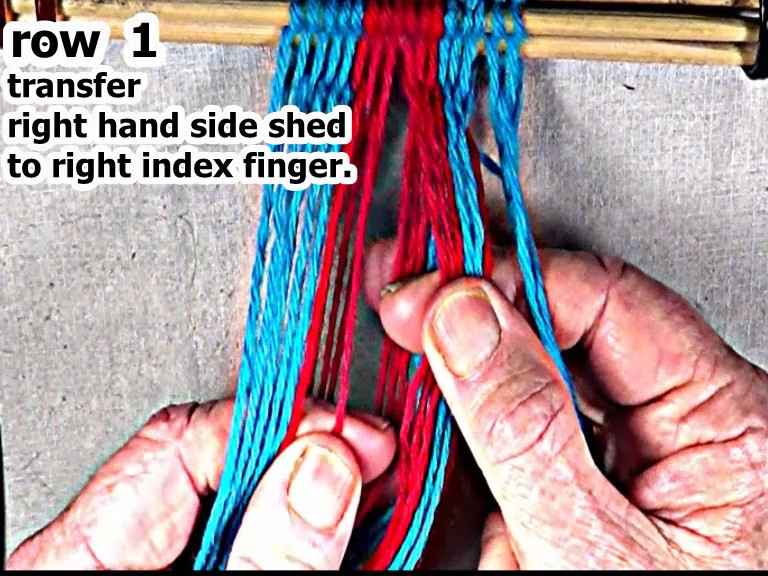
|
| Previous | Next |
Reverse the right hand side of row 1 shed.
[NOTE] make sure that the over/under configuration is maintained. Keep the warp strands parallel. |
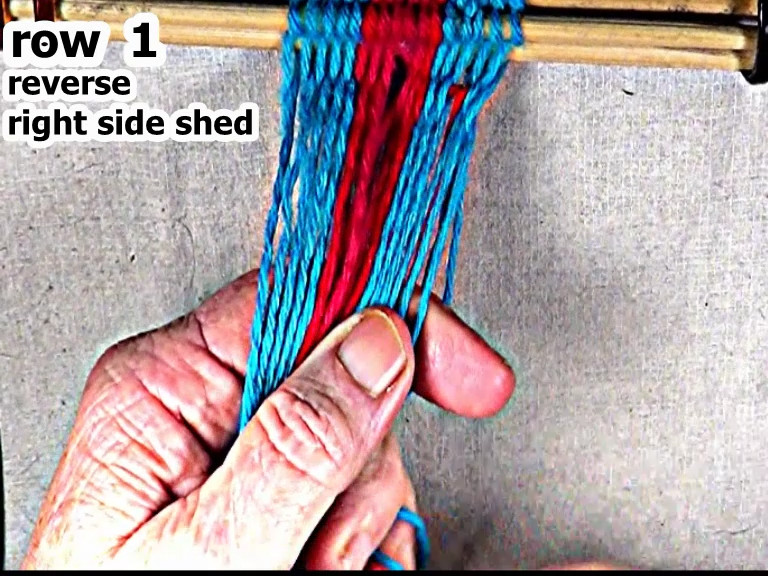
|
| Previous | Next |
| Find the middle of the work piece. |
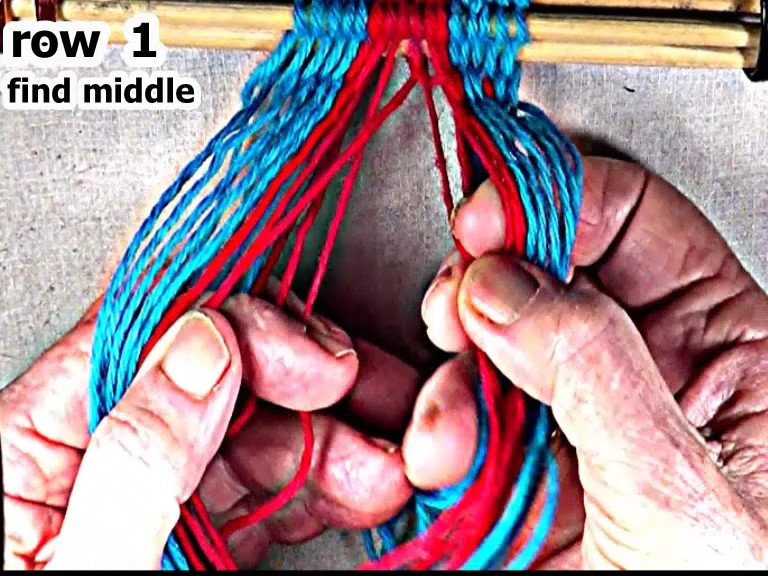
|
| Previous | Next |
Select the left side row 1 weft strand.
[NOTE] When starting the left hand side of a row of weaving, each row's left side weft strand is the first warp strand on the left hand side of the right hand side shed. |
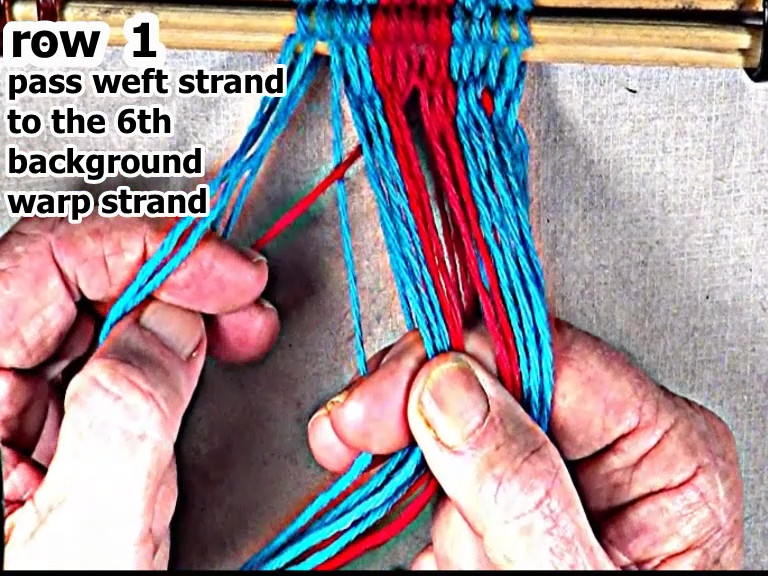
|
| Previous | Next |
Form the interlock in the row 1 left hand side weft strand.
Place the weft strand in the bottom layer of the shed. The warp strand that was the 6th background warp strand becomes the next segment of the row 1 left side weft strand. |
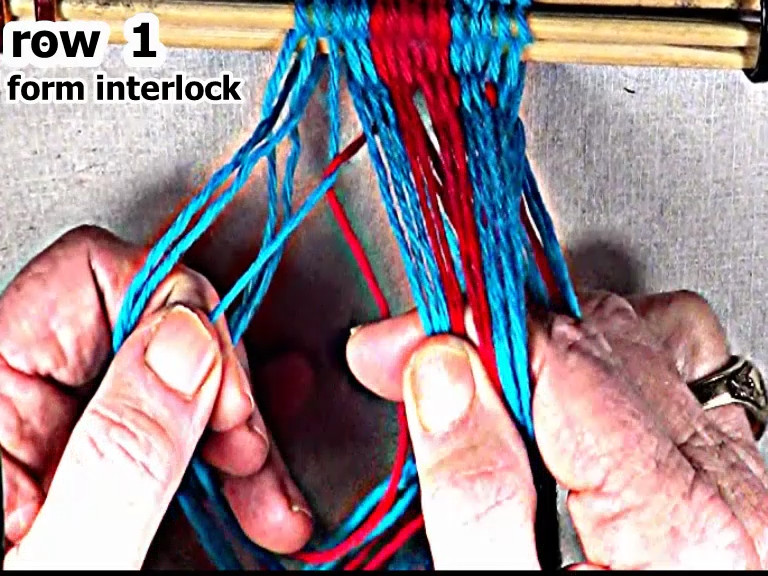
|
| Previous | Next |
| Pass the weft strand through the shed to the left hand edge of the work-piece. |
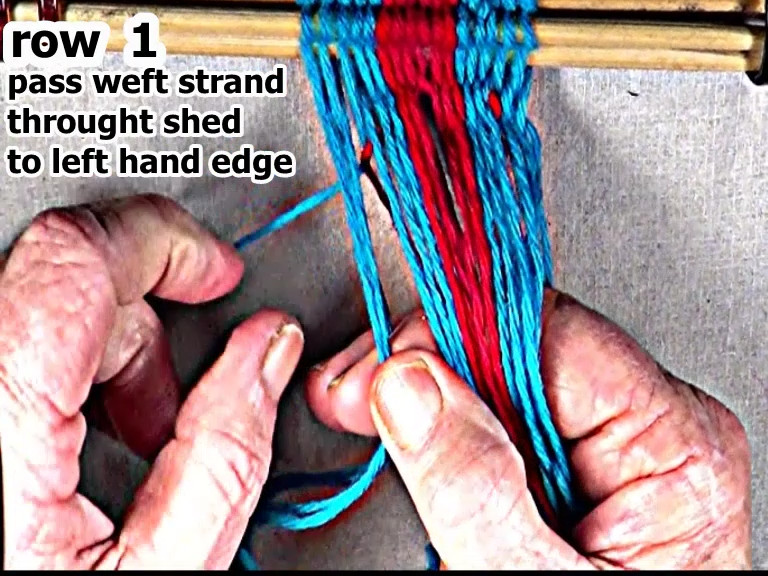
|
| Previous | Next |
| Secure the row 1 left hand side weft strand. |
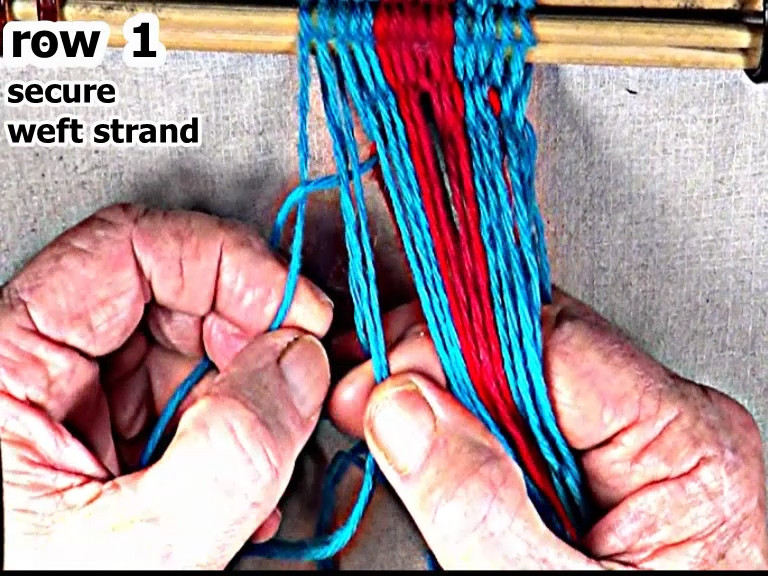
|
| Previous | Next |
| Transfer the left hand side shed to the left hand index finger. |
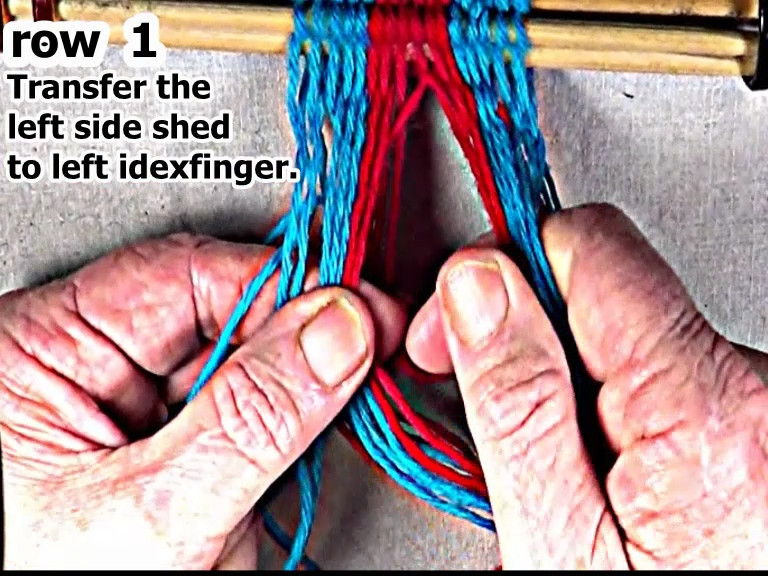
|
| Previous | Next |
Reverse the shed on the left hand side of row 1.
[NOTE] make sure that the over/under configuration is maintained. Keep the warp strands parallel. |
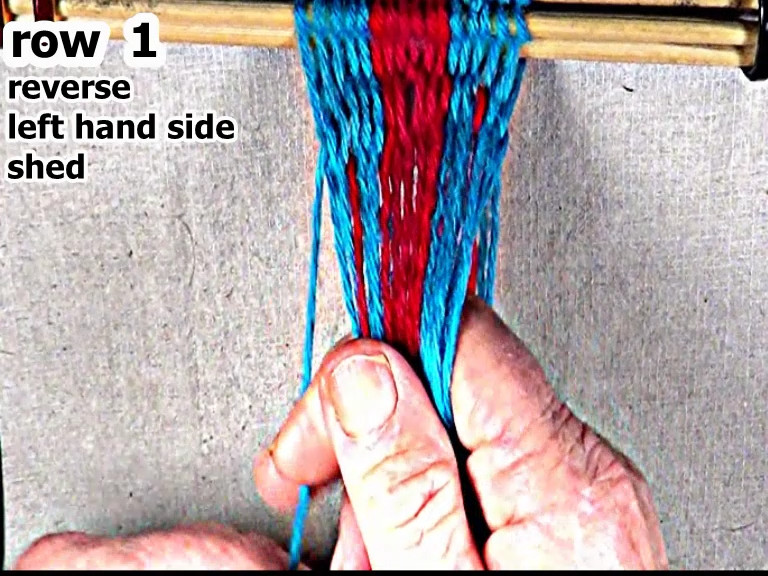
|
| Previous | Next |
Set the row 1 weave.
Check individual strands to see that they are snug and even. [TIP] Use index finger as a beater. |
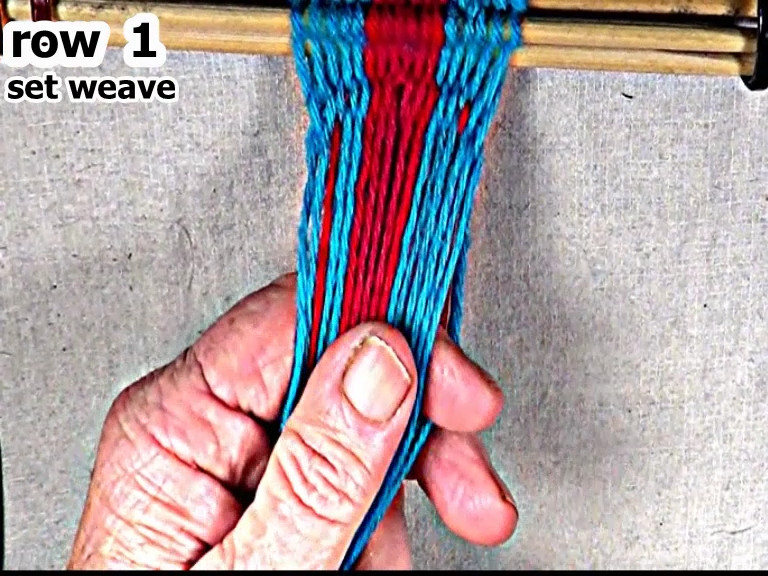
|
| Previous | Next |
|
Find the middle of the work-piece.
[NOTE] The middle is the place where the row 1 weft strands cross. [NOTE]There are five arrowhead warp strands in the right hand side shed and 5 arrowhead warp strands in the left hand side shed. |
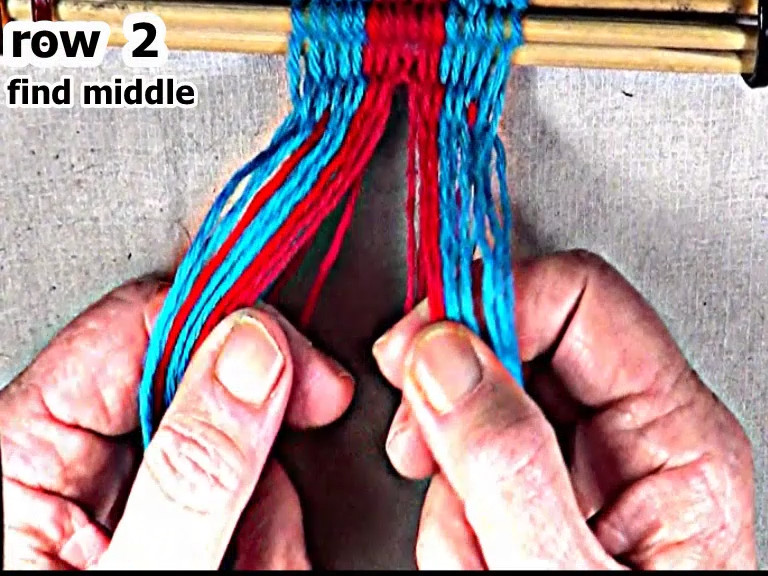
|
| Previous | Next |
Select the row 2 right right side weft strand.
|
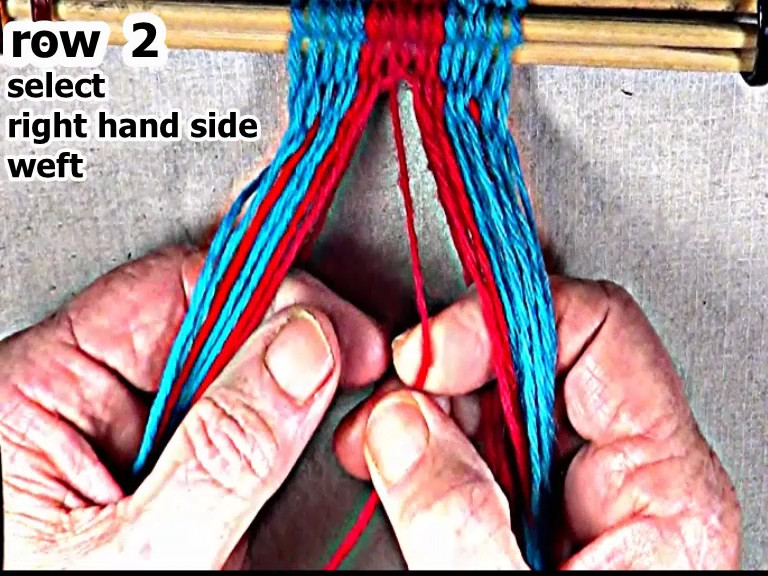
|
| Previous | Next |
| Pass the row 2 left hand side weft strand through the open shed to the interlock in row 1. |
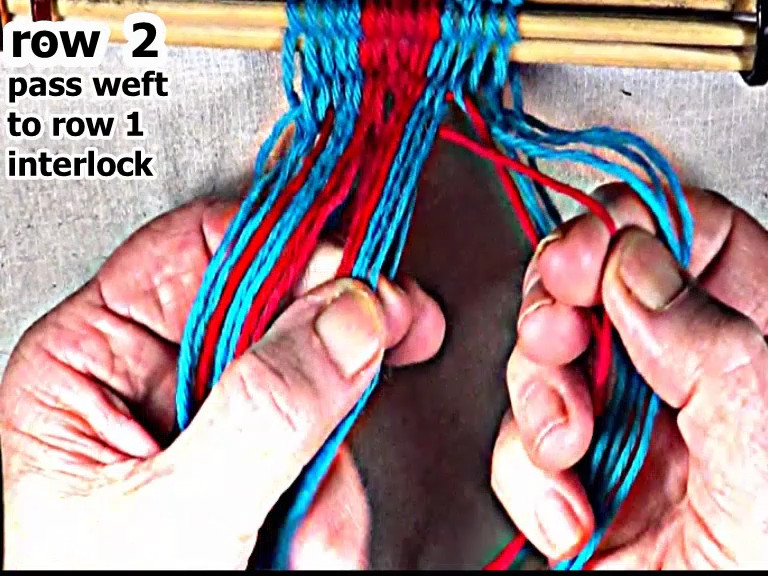
|
| Previous | Next |
>
Form row 2 right side weft strand interlock.
Place the weft strand in the top layer of the shed. When the weft strand is placed in the top layer of the shed the weft strand becomes a warp strand. The interlocked warp strand becomes the next part of the weft strand. |

|
| Previous | Next |
| Pass the row 2 weft strand through the shed to the right hand edge of the work-piece. |
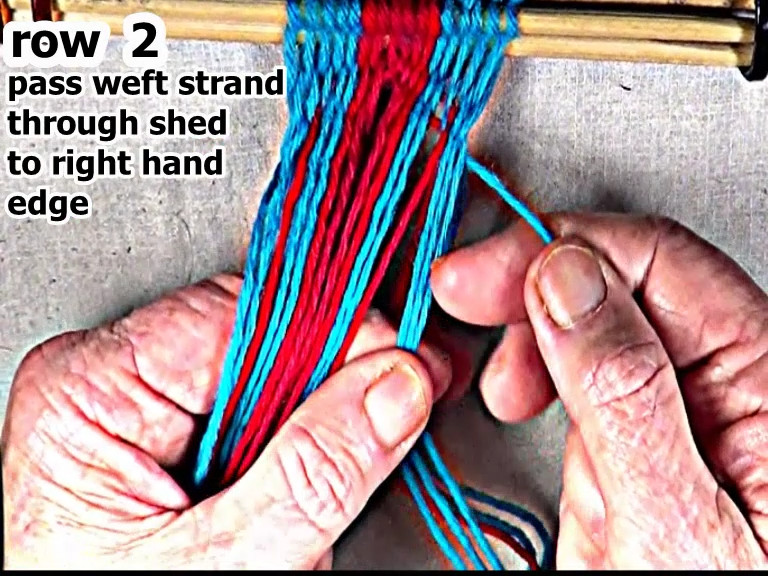
|
| Previous | Next |
Secure the weft strand.
|
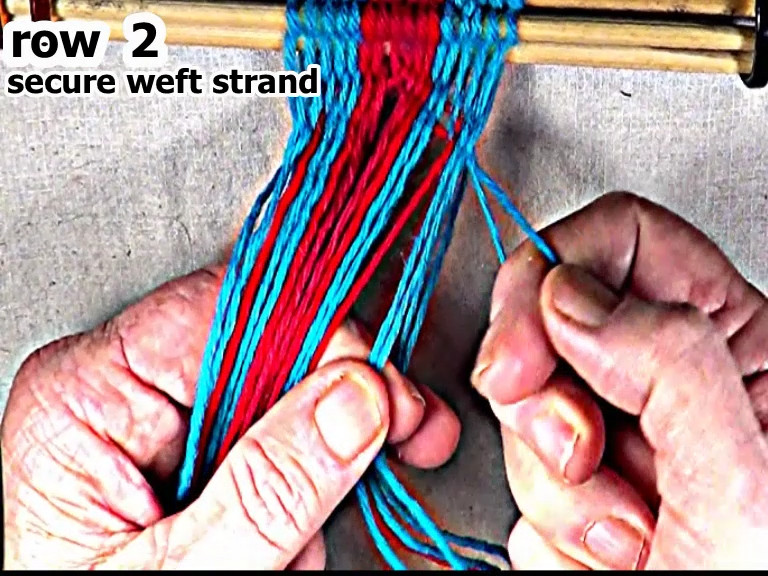
|
| Previous | Next |
| > Transfer the right hand side shed to the right hand index finger. |
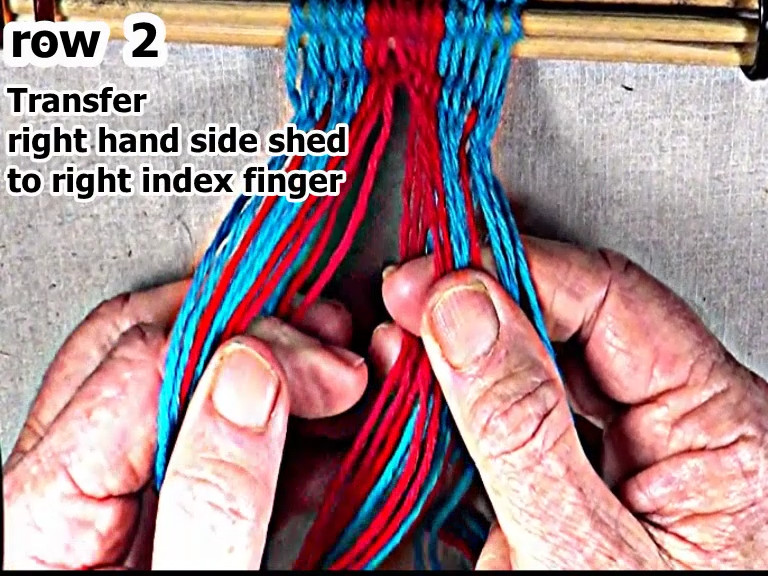
|
| Previous | Next |
Reverse the shed on the right hand side of row 2.
Work from the middle to the right hand edge of the shed. |
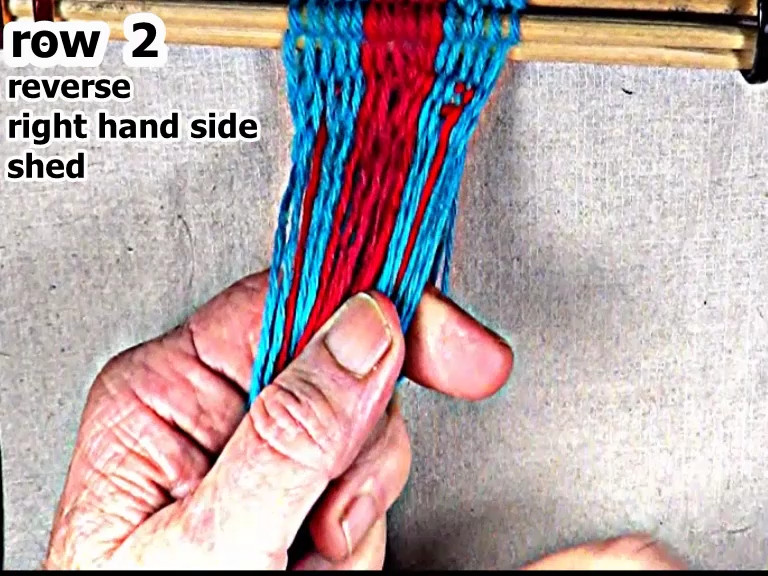
|
| Previous | Next |
Find the middle of the work piece.
[NOTE]There are five arrowhead warp strands in the right hand side shed and 4 arrowhead warp strands in the left hand side shed. |
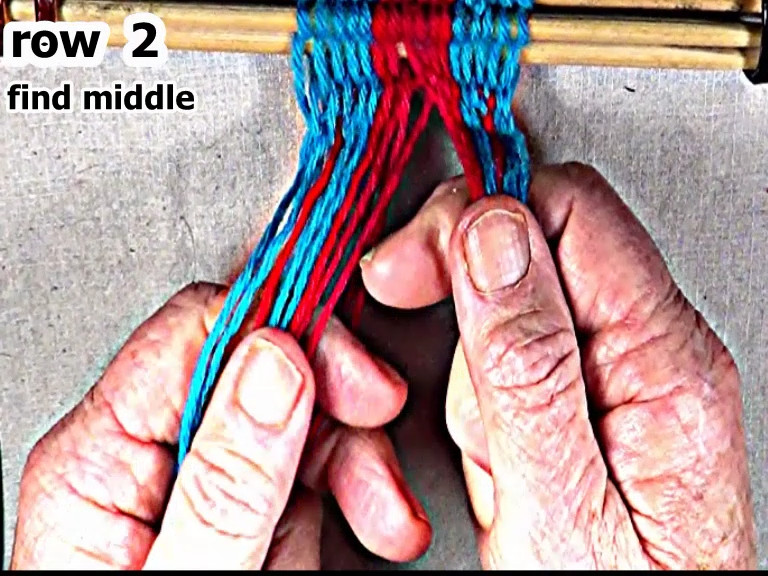
|
| Previous | Next |
Select the left side row 2 weft strand.
|
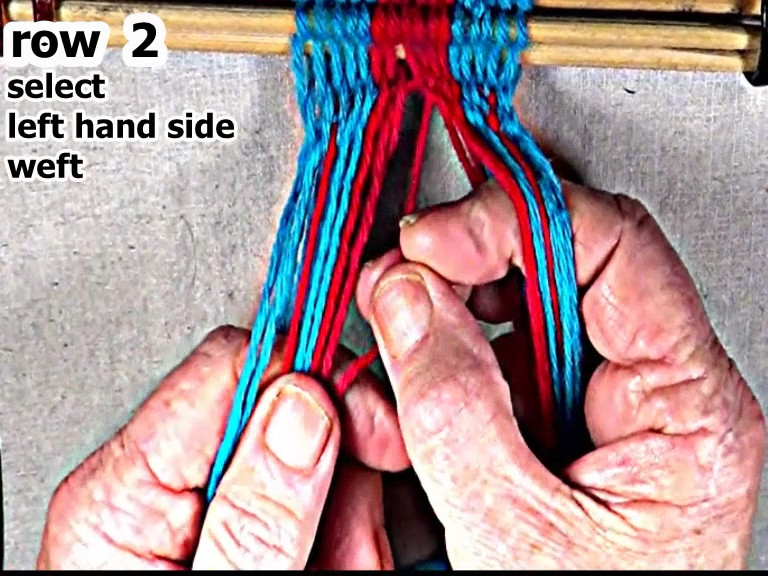
|
| Previous | Next |
Pass the row 2 left side side weft strand through the open shed to the row 1 interlock.
|
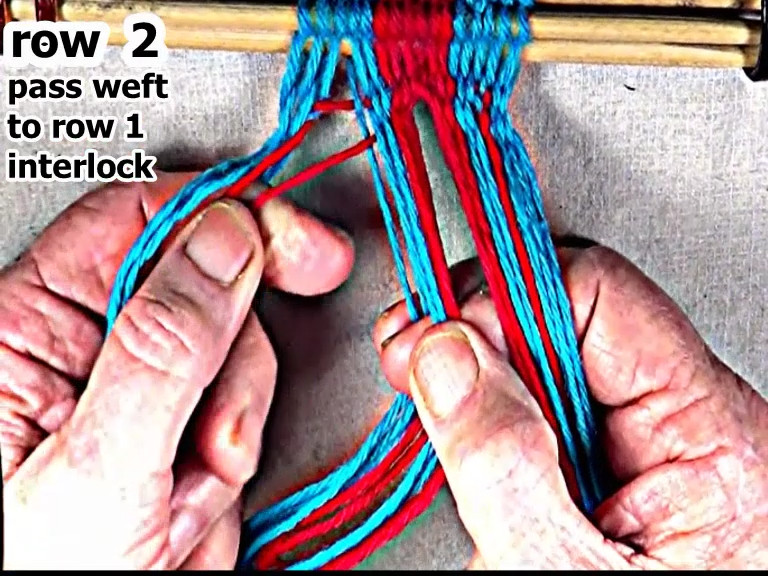
|
| Previous | Next |
Form the interlock on the left hand side of the row 2 weft strand.
Place the weft strand in the bottom layer of the shed. When the weft strand is placed in the bottom layer of the shed, the weft strand becomes a warp strand. The warp strand that was next to the first interlock becomes the next part of the left side weft strand. |

|
| Previous | Next |
|
Pass the row 2 left weft strand through the shed to the left hand edge of the work-piece.
|

|
| Previous | Next |
Then secure the row 2 left hand side weft strand.
|
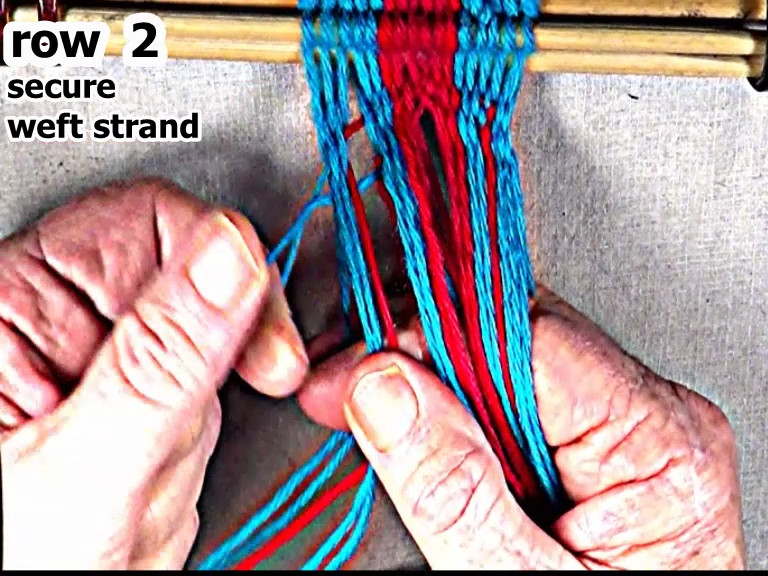
|
| Previous | Next |
| Transfer the left hand side shed to the left hand index finger. |
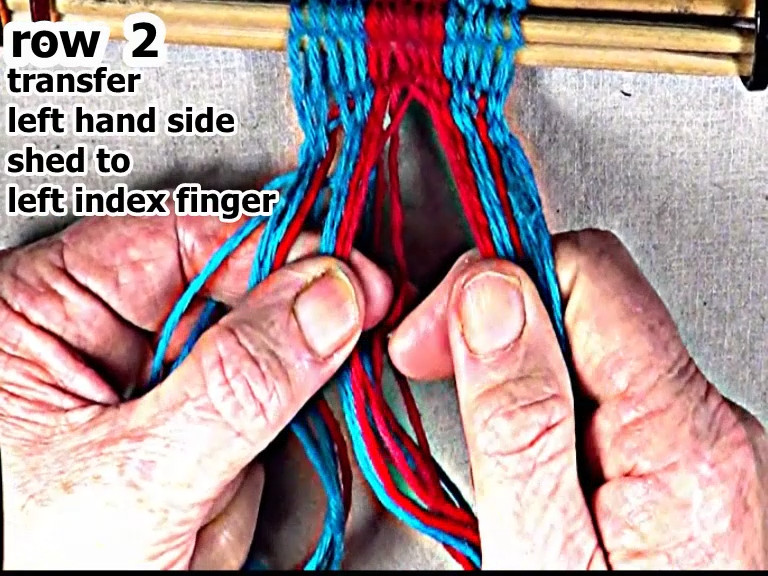
|
| Previous | Next |
Reverse the shed on the left hand side of row 2 .
Work from the middle of the shed to left hand edge of the work-piece. [NOTE] make sure that the over/under configuration is maintained. Keep the warp strands parallel. |
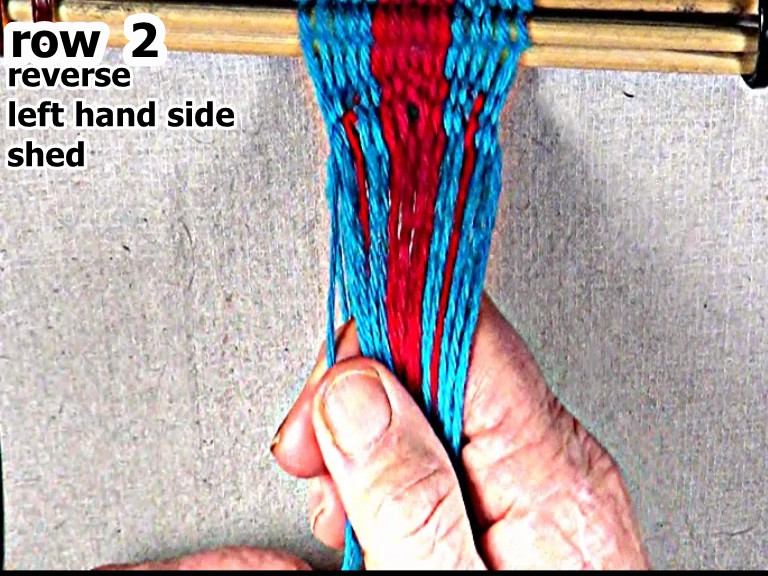
|
| Previous | Next |
Set the row 2 weave.
Check individual strands to see that they are snug and even. [TIP] Use index finger as a beater. |
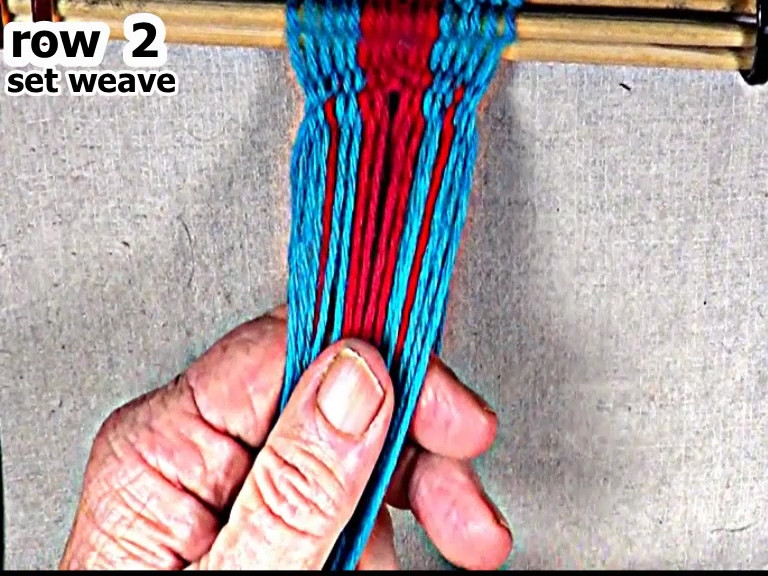
|
| Previous | Next |
Weave the right side of row 3.
|

|
| Previous | Next |
Weave the left side of row 3.
|
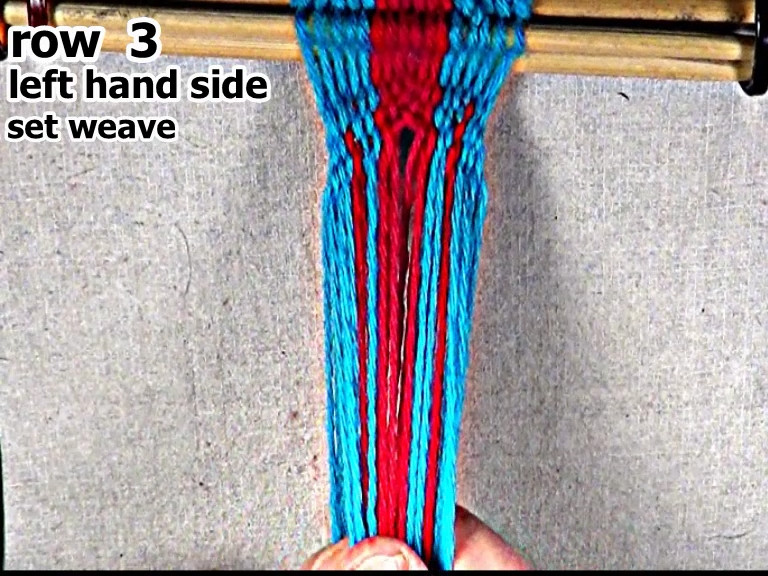
|
| Previous | Next |
| Weave row 4. The same sequesence of weaving steps are requires as used for row 3. |
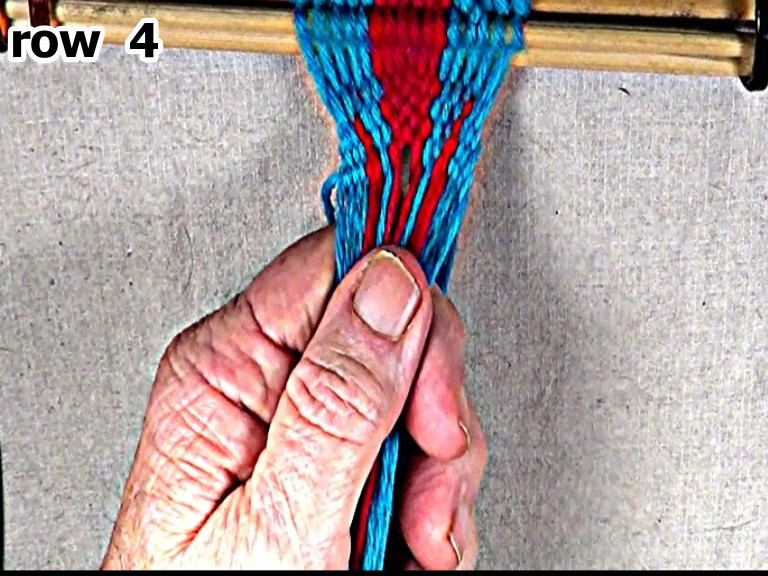
|
| Previous | Next |
| Weave row 5. The same sequesence of weaving steps are requires as used for row 4. |
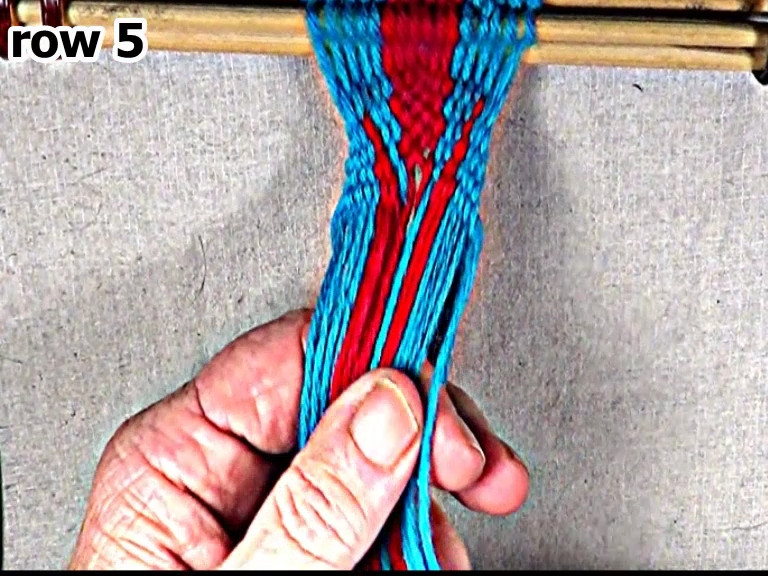
|
| Previous | Next |
|
Row 6 requires the same sequesence of weaving steps as row 5.
This completes the first segment of the arrowhead pattern. [OBSERVE] Each segment is composed of two parts of the arrowhead.
|

|
| Previous | Next |
|
Segment 2 of arrowhed pattern.
[NOTE] To produce a complete arrowhead designe, two segments of the basic patter are required. Continue adding segments untill the work-piece is the desired length |
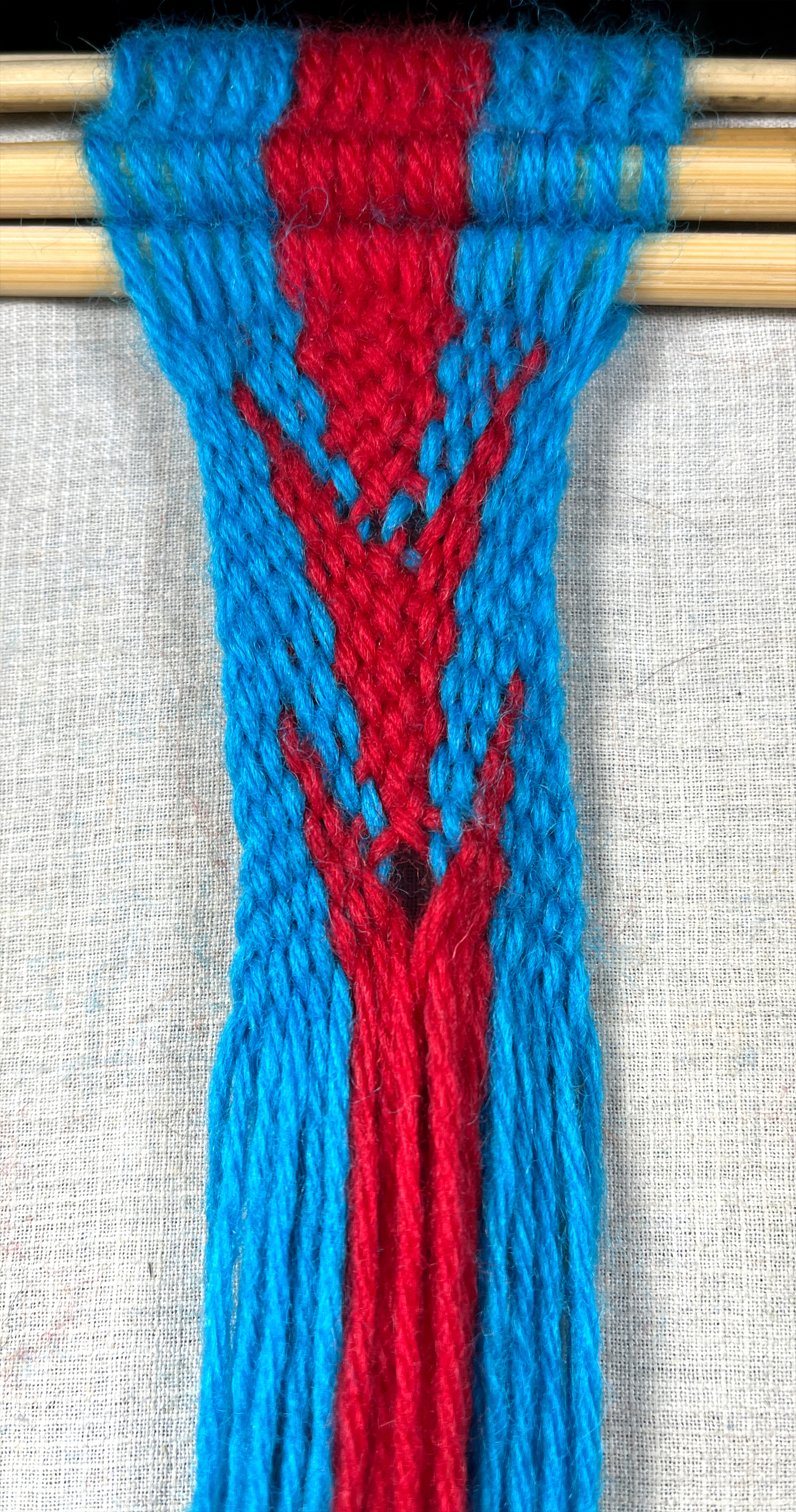
|
| Previous | Start Tutorial |
|
|